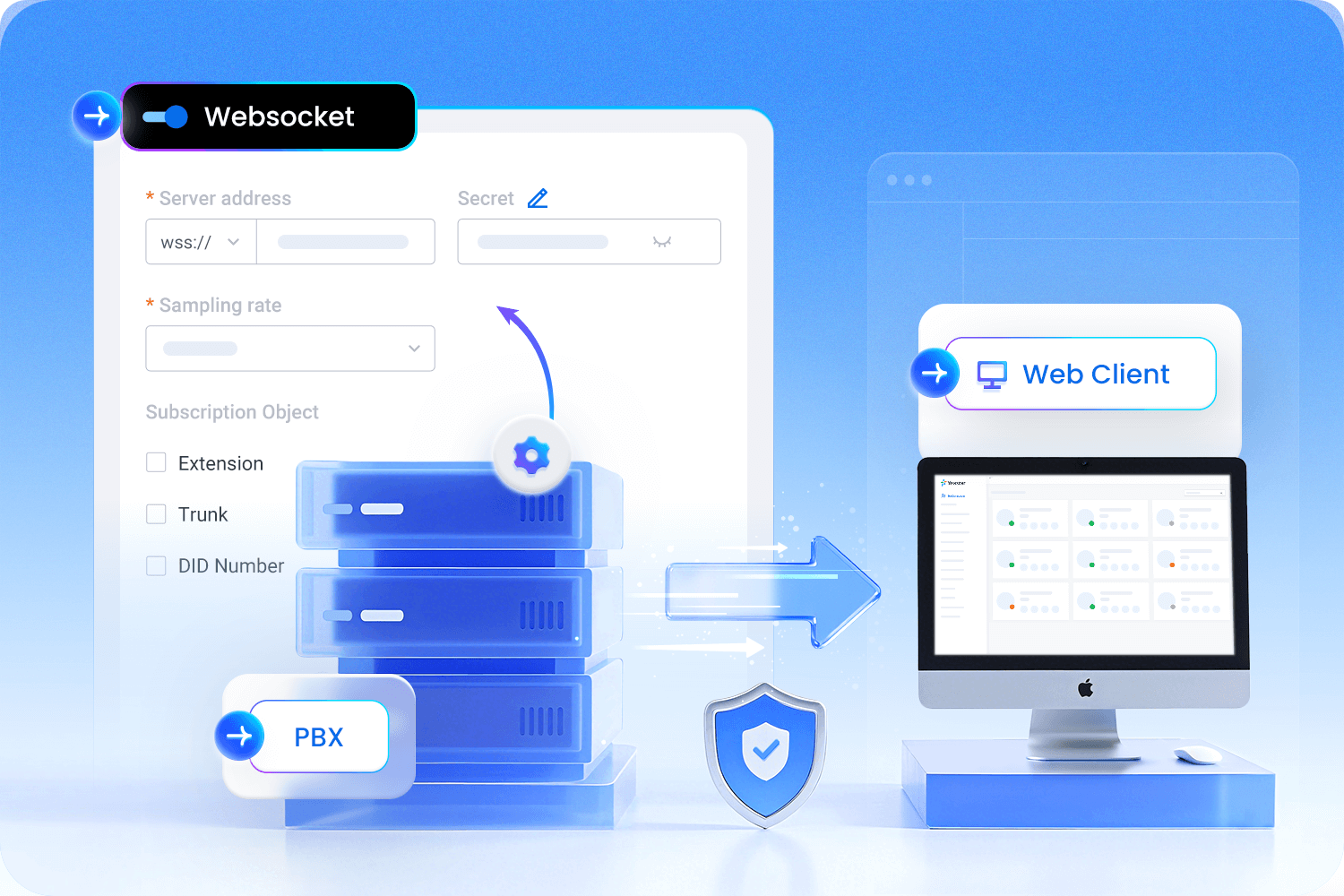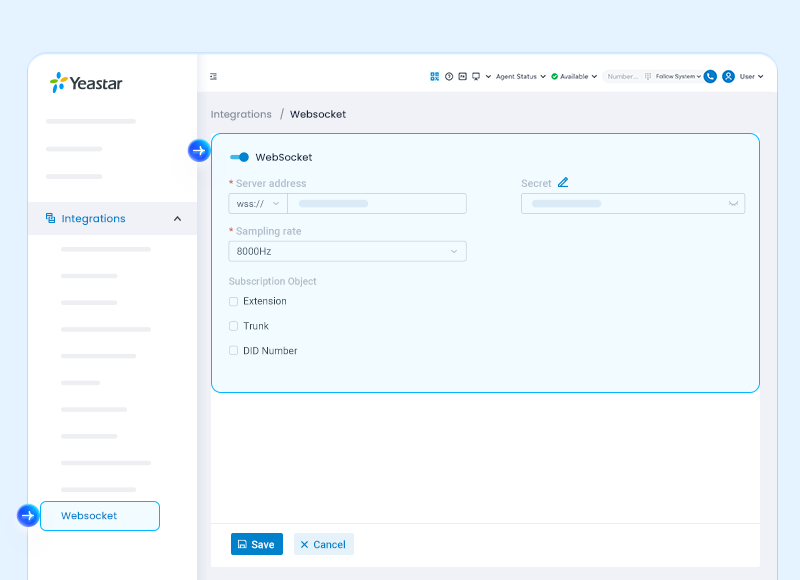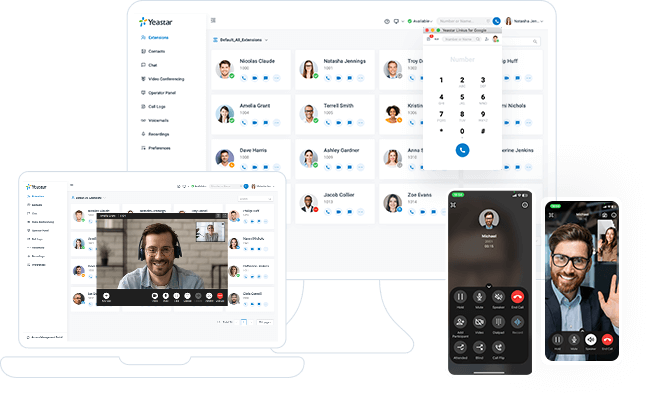What is WebSocket for Audio Streams Transmission?

The Yeastar P-Series Phone System now supports WebSocket for Audio Streams Transmission, a feature that makes it possible to stream live call audio and related data directly to external platforms.
Instead of relying on traditional methods with high latency, WebSocket provides a persistent, low-latency, and secure channel between your PBX and third-party applications. During an active call, the system delivers one-way audio streams along with caller/callee identification and call details.
This seamless connection enables businesses to integrate with transcription engines, speech analytics platforms, or AI-powered assistants in real time — ensuring faster insights, smarter automation, and encrypted data transmission.
How Does Websocket Work?

Using WebSocket in Yeastar P-Series PBX is simple and flexible. All you need to do is configure the connection and choose which call objects to stream:
1. Set the server address.
Enter the WebSocket server URL (wss://) where the audio streams will be delivered.
2. Add authentication (optional).
Use a secret key if required by the external platform for secure data transmission.
3. Select a sampling rate.
Define the audio quality (e.g., 8000Hz) to match the processing requirements of the external system.
4. Choose subscription objects.
Decide whether to stream audio from Extensions, Trunks, or DID Numbers. This lets you control exactly which calls should be sent out.
5. Stream audio with metadata.
Once enabled, the PBX sends live audio packets along with call information such as call ID, channel ID, and the current call scenario (IVR, Queue, Ring Group, Conference, etc.).
Note: WebSocket streaming is unavailable when RTP transparent transmission is enabled, since audio bypasses the PBX.
Use Cases for WebSocket for Audio Streams Transmission
By streaming audio and call details out of the PBX, this feature hands the data over to third-party platforms for real-time processing. From transcription to analytics and AI-driven services, the actual intelligence comes from the external systems you connect.
Real-Time Transcription
Stream audio directly to third-party transcription engines. Sales and support teams can instantly review accurate text transcripts without relying on manual note-taking, ensuring higher productivity and compliance.
Speech Analytics
Integrate with AI-driven analytics platforms to detect sentiment, keywords, and intent in real time. This helps businesses measure customer satisfaction, coach agents effectively, and gain actionable insights from every call.
AI Model Processing
Connect call audio to advanced AI models or voicebots. For example, enterprises can enable automated dialogue handling, real-time language translation, or AI assistants that provide live recommendations during calls.
Emergency Services
Public safety organizations, such as ambulance dispatch centers, can use WebSocket streaming to immediately identify callers and responders. Compatible with third-party AI and speech recognition systems, this ensures accurate voice recognition and faster decision-making during emergencies.
FAQ
Related Features

Complete Communications Solution
Available both in the cloud and on-premises, Yeastar P-Series Phone System unites calls, video, omnichannel messaging, integrations and more in one simple system for your seamless communications anywhere.
Get started with 30-day free trial
Create your Yeastar phone system in minutes & see what all-in-one communications can do for your business today.
X
